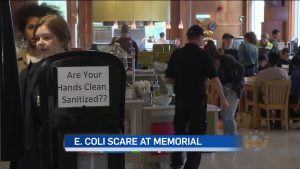A pregnant mum has told of her fears for her unborn baby after contracting salmonella at the same hotel where a mum claims her two-year-old daughter contracted E. coli and later died.
 Emma Broadhurst was six months pregnant when she flew out to Turkey with friends for a 7-night stay at the Crystal Sunset Luxury Resort and Spa, east of the city of Antayla, at the start of September.
Emma Broadhurst was six months pregnant when she flew out to Turkey with friends for a 7-night stay at the Crystal Sunset Luxury Resort and Spa, east of the city of Antayla, at the start of September.
But, according to Andy Rudd of The Mirror, within days of arriving she fell unwell suffering from chronic diarrhea and became dehydrated and lost weight.
Just over 24 hours later her best friend’s seven-year-old son, Kailan, also fell ill with diarrhea and on their return to the UK his mum, Emma McComb, fell ill and Kailan was left ‘screaming in agony’ and projectile vomiting.
All three, who shared a room while on holiday, were then diagnosed with salmonella poisoning after stool samples were sent for testing by their local GP, claims Emma.
The friends stayed in the same hotel where two-year-old Allie Birchall and her family holidayed before little Allie was taken ill before passing away having contracted E. coli.
All members of her family, from Wigan, Greater Manchester, suffered from gastric symptoms including stomach cramps and diarrhoea during their 10-day stay with Jet 2.
Allie’s condition became so severe she was rushed to hospital after the family returned to the UK.
Her parents had to make the heartbreaking decision to switch off her life support on August 3.









